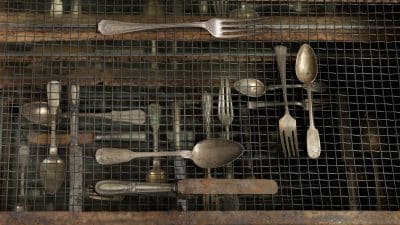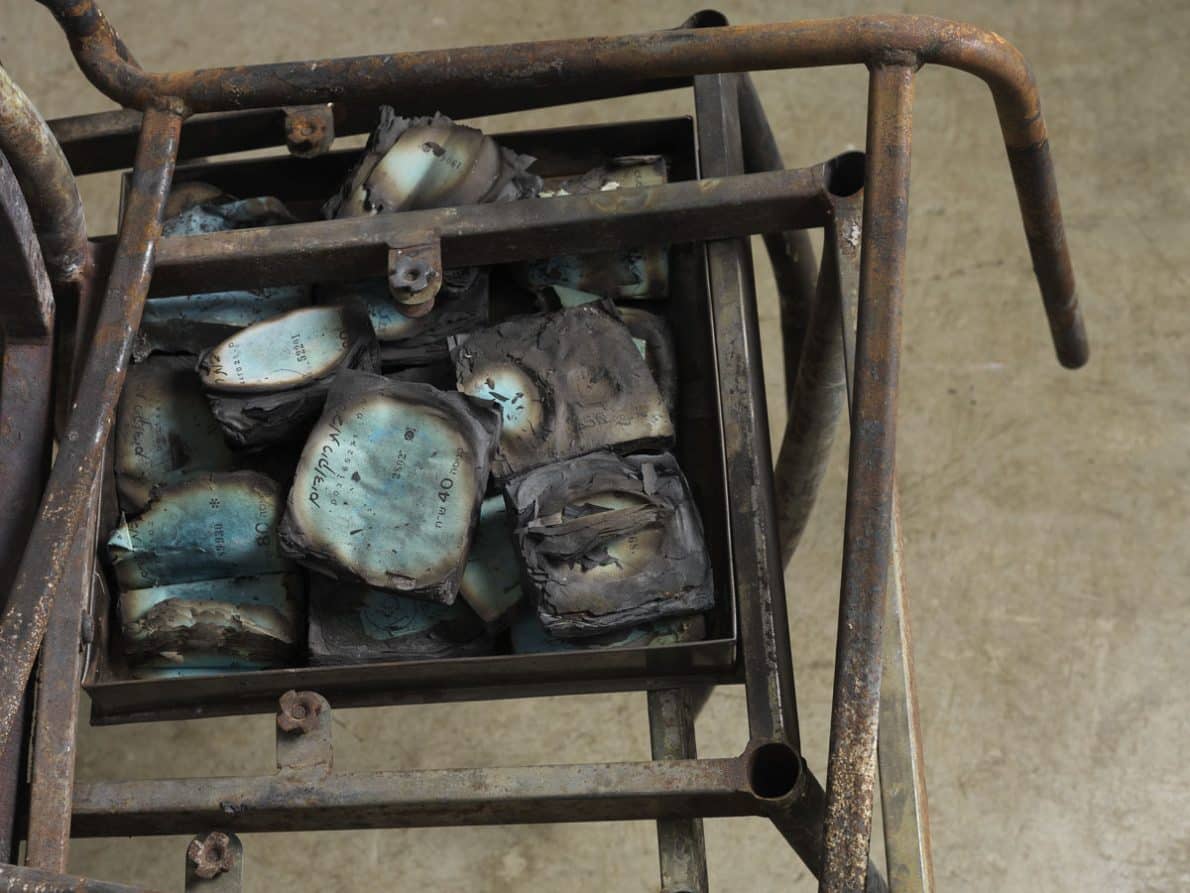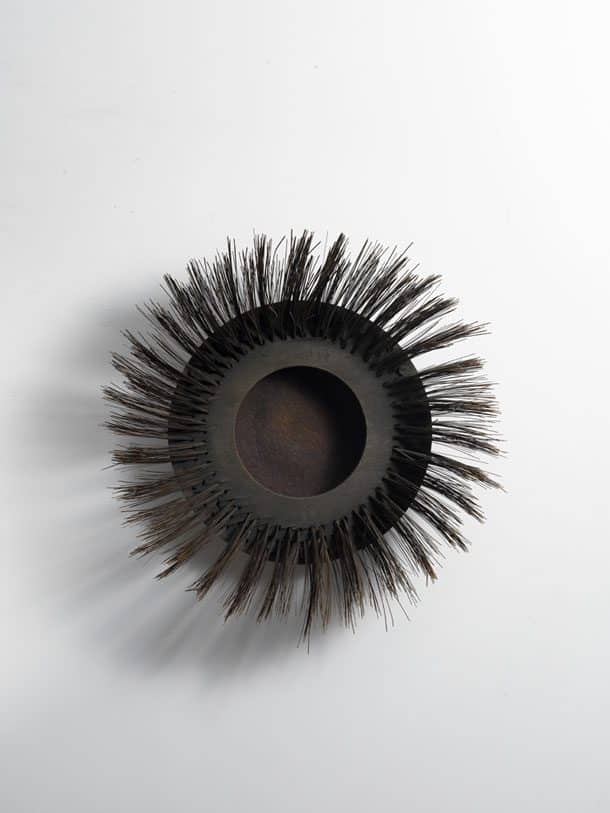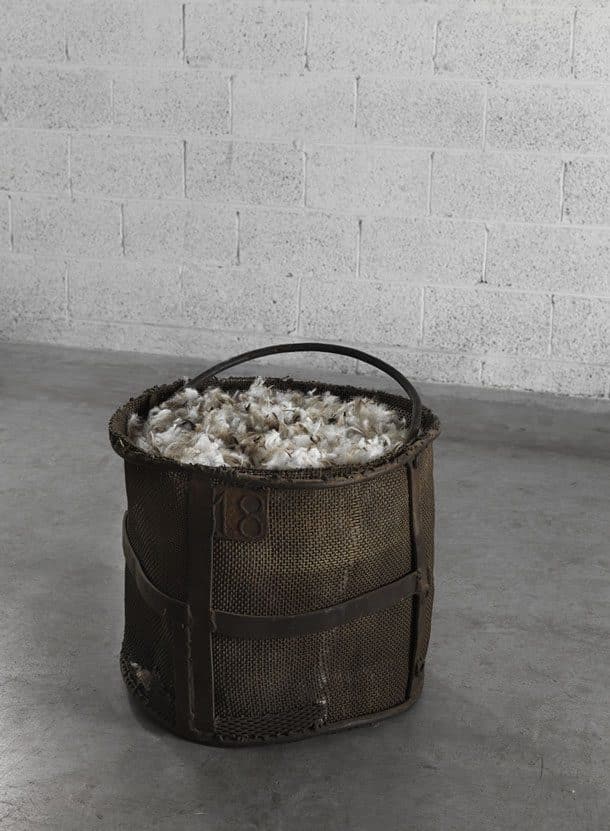What has happened? When and where? Past events and memory play an important role in Doris Arkin's work, serving as raw materials for her sculpture. The objects the sculptures are constructed from function as carriers of material, historical, and cultural information.
Even at first glance, before we delve into associations of times and places, the works’ physical dimension is evident, emphasized by opposites: industrial versus hand-made, black vs. white, the containers and the void within them, the world of industry vs. the intimacy of the home. Gender associations also emerge in the context the objects Arkin combines in her assemblages.At the foundation of Arkin’s artistic approach is the found object (objet trouvé, in French). It is defined as a manufactured or naturally available item (or a part of it) which has been used as raw material in an artwork. This art form developed in the first third of the twentieth century among Dada and surrealist artists. As they combined various objects, with different functionalities and characteristics, they created new, poetic objects that defied concepts and categories. In the 1960s, the use of found objects re-emerged and was expanded by artists from European movements such as Fluxus, New Realism, and Arte Provera, and also by the Young British Artists in the 1990s. Found-object-based art inevitably assumes the object’s identity and story, as well as its place in history and in society, as part of the artistic meaning conveyed by the new work.
The objects Arkin selects, which are the starting points of her works, usually possess an abstract geometrical shape – a cube, a cylinder – and are often made of metal, like minimalistic ready-made sculptures. The fact that these objects have been thrown away and survived disasters helps Arkin to create works that evoke pain, loss, and death. To the industrial equipment she has found in various places, Arkin adds a resonance of a lost elegant, bourgeois world, in a laborious process of investigating, searching and finding, and stitching together delicate bits of fine textiles. Her work is nourished also by items with a personal significance: the family’s old silverware (in “Festive meal”); the number 18 – the age of induction into the military in Israel – found on a basin for tempering metal (“Plucking”); and the deep, shocked impression left in her upon hearing the testimonies of young women, survivors of the genocide of the Yezidi people, concerning their continuing suffering (“Loot”).
While the personal motivation remains hidden, the specifically detailed materials that make up the works suggest further directions of interpretation, from within the sensory and emotional experience.
Doris Arkin, born in Uruguay in 1957, has turned to art studies relatively late in her life, after a twenty-year career as a psychologist. In the last five years she has been showing in various exhibitions, and this is her third solo show.
Our thanks to the artist for loaning her works to the exhibition.
Curator: Dr Dalia Manor
Assistant Curator: Nirit Dahan
Be'er Sheva Municipality
Kivunim
Ministry of Culture and Sport




